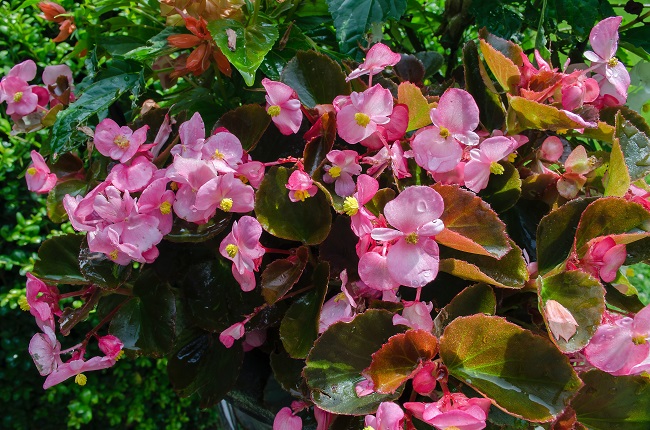
Begonias are a versatile group of plants that can be grown in a greenhouse with proper care. Follow these basic guidelines to care for and propagate begonias.
Basic Care
Light
Begonia plants prefer bright, indirect light. Place them near a the outside of the greenhouse but not in direct sunlight use artificial lighting to supplement.
Water
Begonia plants like to have evenly moist soil, but not waterlogged. Water the soil directly, avoiding getting water on the leaves to prevent leaf rot.
Soil
Use a well-draining potting mix that is rich in organic matter.
Fertilizer
Feed begonias with a balanced water-soluble fertilizer every 2-4 weeks during the growing season.
Temperature
Begonia plants prefer temperatures between 60°F to 75°F (15°C to 24°C).
Humidity
Begonia plants prefer high humidity levels, which can be achieved by placing a tray of water near the plant or using a humidifier.
Repotting
Repot begonias every 2-3 years or when the roots have filled the pot.
It’s also important to note that different types of begonias have different requirements, so make sure to research the specific needs of the begonias you plan to grow.
Propagation
Stem Cuttings
Take stem cuttings from a healthy begonia plant, remove the leaves from the bottom of the cutting, dip the cut end into rooting hormone, and plant it in moist potting soil.
Division
For begonias with multiple stems, divide the root ball into smaller sections, making sure each section has roots, and plant them in separate pots.
Leaf Cuttings
Cut a healthy leaf from the begonia plant, place it on moist potting soil, and keep the soil moist. New plants will grow from the veins of the leaf.
Seed
You can also propagate begonias from seeds. Plant the seeds in moist potting soil and keep the soil moist until they sprout.
In all cases, it’s important to provide bright, indirect light and keep the soil moist, but not waterlogged, to encourage rooting and new growth.
7 Fun Facts About Begonias
Begonias belong to the family Begoniaceae, which contains over 1,800 species and cultivars.
Begonias are native to subtropical and tropical regions and are popular for their brightly colored flowers and attractive foliage.
The wax begonia (Begonia semperflorens) is one of the most popular species for gardens and is grown for its large clusters of showy, brightly colored flowers.
Begonias are known for their ability to tolerate low light conditions, making them popular as indoor plants.
Some species of begonias are also grown for their leaves, which can be brightly colored or have unique patterns or textures.
Begonias have been cultivated for thousands of years and were brought to Europe from South America in the 16th century.
Begonias are considered good luck plants in many cultures and are sometimes given as gifts to new homeowners.
Related Articles & Free Email Newsletter Sign Up
The Best Ways to Propagate Your Houseplants
The Keys to Year-Round Container Gardening




Comment here